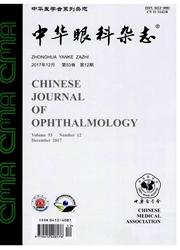

 中文摘要:
中文摘要:
目的研究胸腺基质淋巴细胞生成素受体(TSLPR)/信号转录活化子5(STAT5)在人角膜基质细胞(THSF)抗烟曲霉菌感染免疫中的作用。方法实验研究。免疫荧光检测正常培养条件下角膜基质细胞TSLPR的表达。将人重组TSLP蛋白(hTSLP)添加至培养基中,于5、15、30、60min收取细胞,免疫印迹法检测磷酸化STAT5(p-STAT5)和STAT5的蛋白表达。烟曲霉菌刺激细胞后,于1、3、6、12、24、48h收取细胞,RT—PCR检测TSLPR和IL-7Ra的mRNA表达;于刺激后12、24、48h收取细胞,免疫印迹法检测TSLPR、p-STAT5和STAT5的蛋白表达。中和性抗体封闭TSLPR受体后,烟曲霉菌刺激细胞24h,免疫印迹法检测p-STAT5和STAT5的蛋白表达。组间均数的比较采用单因素方差分析,均数间的多重比较采用LSD.t检验;组间均数的两两比较采用独立样本个t检验。结果免疫荧光显示,THSF可见绿色荧光,正常THSF表达TSLPR;人重组TSLP蛋白刺激细胞后,免疫印迹法显示p-STAT5增多,至30min时达峰(烟曲霉菌组:8.87±0.75;对照组:1.00±0.14),差异有统计学意义(P〈0.01)。烟曲霉菌刺激细胞后3、6、12、24hTSLPRmRNA(0.00050±0.00007、0.00120±0.00011、0.00230±0.00025、0.00170±0.00017)较对照组(0.00020±0.00003、0.00020±0.00005、0.00020±0.00003、0.00020±0.00004)表达增多,差异均有统计学意义(t=-9.955,-17.329,-16.735,-18.214;P〈0.01);IL-7RamRNA的表达无明显变化(t=-0.684,-0.029,-0.319,-1.034;P〉0.05)。免疫印迹法检测结果显示,烟曲霉菌刺激后24hp-STAT5和TSLPR的表达较对照组明显增多(p-STAT5:9.46±2.08,1.00±0.06;TSLPR:1.80±0.27,1.00±0.34),差异有统计学意义(t=-7.055,-3.170,P〈0.01)。中和性抗体封闭TSLPR受体后,p-STAT5的表达减少(anti-TSLPR-烟曲霉菌:0.55±0.20?
 英文摘要:
英文摘要:
Objective To study the primary role of TSLPR/STAT5 signaling in inflammatory responses triggered by Aspergillus fumigatus(AF) in telomerase-immortalized human stromal fibroblasts (THSF). Methods Experimental study. Baseline expression of TSLPR in THSF was assessed by immunofluorescence analysis. Human recombinant TSLP was added. At 5, 15, 30 and 60 min after incubation, cells were harvested for Western blot to assess the protein levels of p-STATS and STAT5. After stimulated with AF hyphae for 1, 3, 6, 12, 24 and 48 h, cells were collected for measurement of mRNA of TSLPR and IL-7Rα. After incubated with AF hyphae for 12, 24 and 48 h, cells were harvested for Western blot to assess the protein levels of TSLPR, p-STAT5 and STAT5. Incubation with anti-TSLPR antibody was performed for 4 h, and at 24 h after AF hyphae were added, cells were harvested to assess the protein levels of p-STAT5 and STATS. Results Immunofluorescence staining evidenced that expression of TSLPR was visualized in THSF. Western blot assay showed that p-STATS protein was increased and peaked at 30 min after stimulation with hTSLP (AF group: 8.87±0.75; control group: 1.00±0.14; P〈0.01). RT-PCR revealed that the expression levels of TSLPR mRNA were increased after incubation with AF hyphae for 3, 6, 12 and 24 h (AF group: 0.000 50±0.000 07, 0.001 20±0.000 11, 0.002 30±0.000 25 and 0.001 70±0.000 17; control group: 0.000 20±0.000 03, 0.000 20±0.000 05, 0.000 20±0.000 03 and 0.000 20±0.000 04; t=-9.955, - 17.329, - 16.735 and - 18.214, P〈0.01), but the expression levels of IL-7Rα mRNA were not increased significantly (t=-0.684,-0.029,-0.319,- 1.034, P〉0.05). In comparison with the control group, after being challenged with AF hyphae for 24 h, both TSLPR and p-STAT5 protein were increased significantly (p-STAT5:9.46-±2.08 vs. 1.00±0.06; TSLPR: 1.80±0.27 vs. 1.00±0.34; t=-7.055, -3.170, P〈0.01). Western blot showed that the elevated p-STAT5 expression levels observed after AF hyphae stimulati
 同期刊论文项目
同期刊论文项目
 同项目期刊论文
同项目期刊论文
 期刊信息
期刊信息
